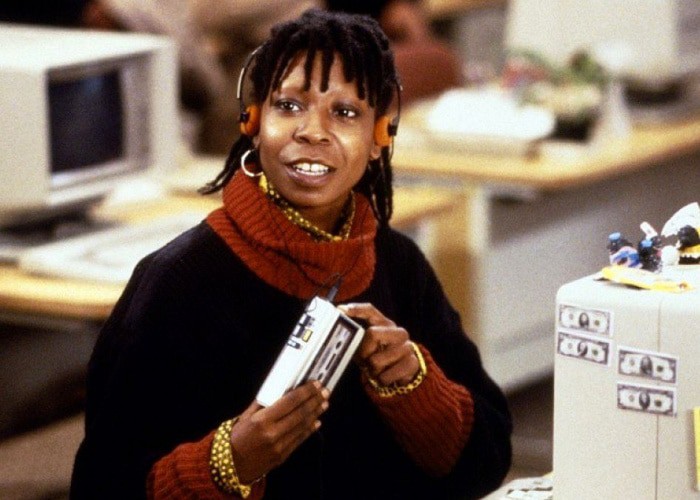
You’ve got to start somewhere. Penny Marshall began life as a director on the set of the sitcom Laverne & Shirley, in which she starred. Over the course of a few years, she helmed four episodes as well as the Working Stiffs pilot starring Michael Keaton and Jim Belushi. She enjoyed the experience but was not particularly impassioned to pursue work behind the camera. That was her brother Garry’s gig, and not a lot of folks were encouraging her to take command. She was content with that.
Years passed. A chance encounter with Whoopi Goldberg in New York, where she had gone to purchase an apartment, kickstarted the conversation that finally brought Penny Marshall to Jumpin’ Jack Flash. In an on-camera interview logged with the Archive of American Television (watch below), she explains how the production was in total chaos. Goldberg had just been brought on to replace Shelley Long as the lead and was feeling the heat. Twentieth Century Fox fired everyone associated with version one of the film, including cinematographer Jan De Bont and director Howard Zieff.
This was not a movie; it was a graveyard. If producer Lawrence Gordon couldn’t get the film turned around quickly, then the whole thing was kaput. He desperately needed someone to take over, and he was on the phone with his overlords when Penny Marshall walked into Goldberg’s hotel room. He practically pounced on her, begging Marshall to take over. She was resistant. She hadn’t even read the script, and the idea of entering such a hopeless environment was not terribly appealing.
Marshall needed time and council. Her brother had been encouraging her to pursue directing for years. Garry, a longtime TV writer and director who’d created Happy Days and Laverne & Shirley and was now himself helming feature films, stated that Hollywood was a strange business and that “they pay you to learn.” Take the opportunity and run. So she did.
Step one was breaking out her Rolodex. She got on the phone with her friends and populated the set with them. Belushi, McKean, Phil Hartman, Carol Kane, Jon Lovitz, and daughter Tracy Reiner. One after the other, the cast fell into line, and a safety blanket was formed. Here was a brain trust that she could rely on when doubt settled in, and boy, would there be a lot of doubt on Jumpin’ Jack Flash.
Marshall spoke to the LA Times shortly before the release of the film. She referred to the job of the director as “The Dog’s Life.” You scrounge through a script, dig up whatever treats you can, and hope your master is happy at the end of each day. Throughout an 11-month production, Marshall barely caught a wink of sleep. There was no time to think, the pressure was on, and she simply had to produce a picture. Who cares if it’s good or not? Done is better than good.
“I thought I’d die the first two weeks,” she told the Times. Go, go, go. No time for rest. No time for lunch, or food in general. She found herself jealous of her actors. At least they were babied with their wants and feelings managed. The director was given marching orders and deadlines.
Yet, after one hell of a production, Marshall found herself craving a second experience. The charge of steering so many parts was electric, and the fact that she made it to the finish line with a film that wasn’t total garbage was thrilling. She survived it. She learned that she could wield command, and she believed that she left that film better than where it was at the start.
Jumpin’ Jack Flash is a fairly basic movie. Goldberg’s Terry is the computer tech at a local bank. After she receives a secret message from a mysterious operative with the titular codename, she becomes a target for international hitmen. She dodges bullets, fires a few of her own. Cold War shinanigans act as an excuse to celebrate Goldberg’s personality.
The film was pretty much reviled by critics when released but made enough bank at the box office to equal a win for Marshall. She quickly knocked out the accompanying Aretha Franklin music video cover of the eponymous Rolling Stones song, and various offers for films hit her desk. She turned most of them down, not wanting to remain in the same realm as her freshman effort. Two years later, she owned all our hearts with Big.
Penny Marshall may have backed into directing, but once she was there, she made the profession a passion. She fought self-doubt at every turn but trusted in the word of those around her. Get behind that lens. Once there, you’ll figure it out. She did.
Related Topics: Big, Garry Marshall, Jumpin' Jack Flash, Penny Marshall, Whoopi Goldberg

